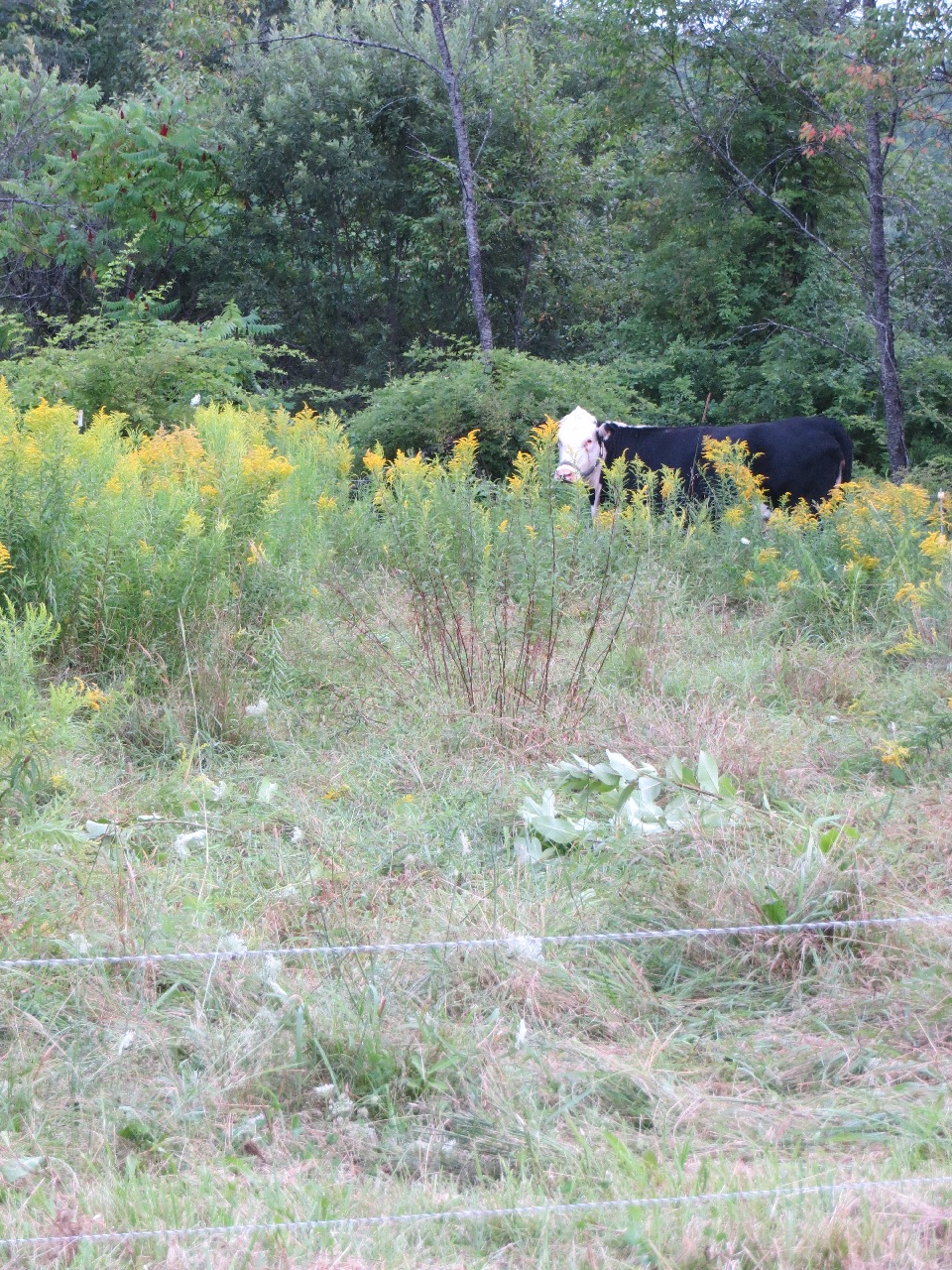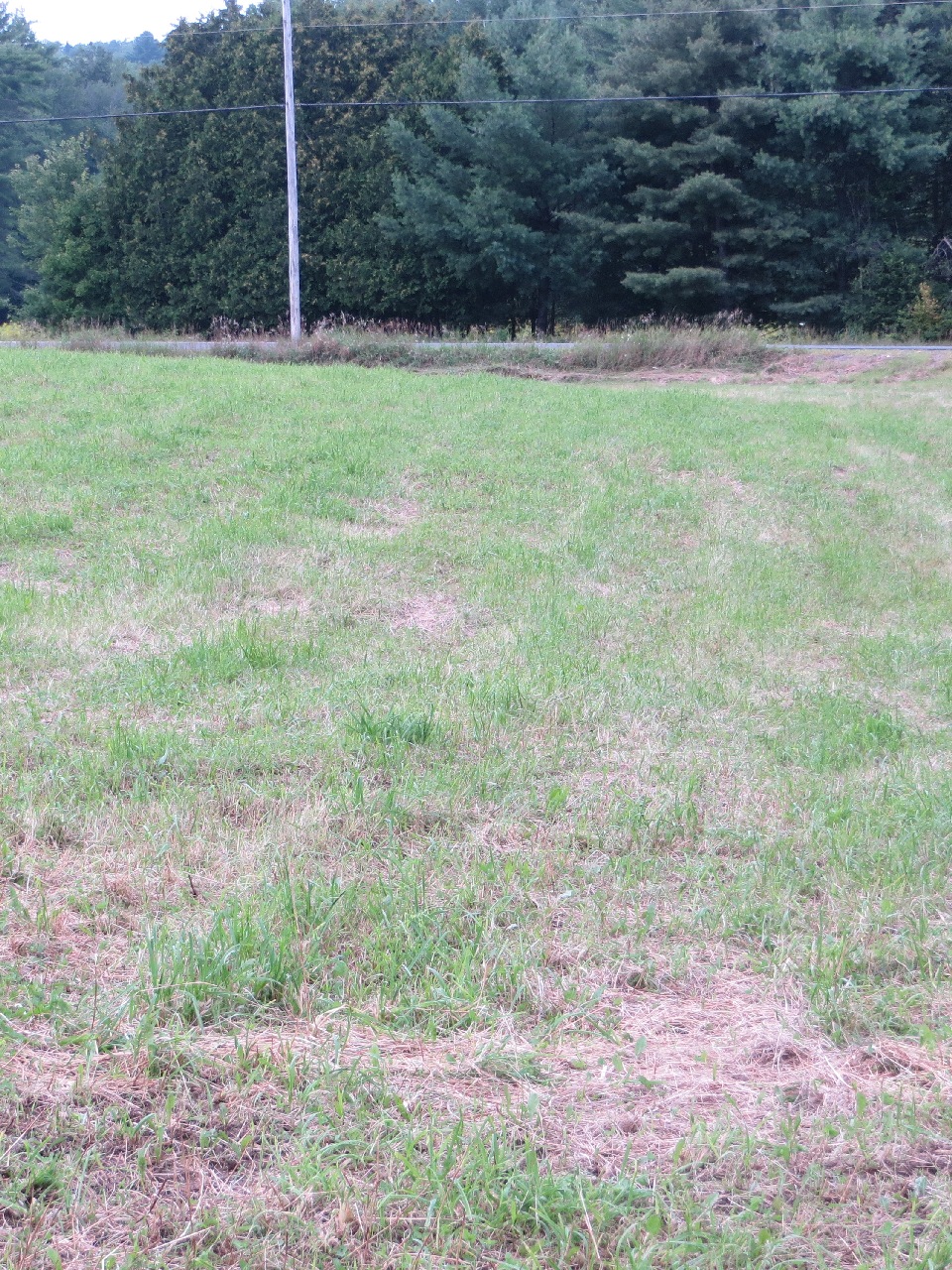We have a couple cows right now: this is Greta.

This is the bottom portion of the field we hayed the other day. We ran pigs in here many years back and they dug it up very badly and we’ve never gotten around to smoothing it out enough to make it comfortable to run a tractor over. There are a couple refrigerator-sized (at least) rocks just poking up to the surface, which doesn’t help either.
Most of our farm is downhill from the farmhouse, but parts of this field are uphill. So one year (probably 5-7 years in) we had the cows there, and couldn’t figure out why the cows were suddenly running out of water all the time. But it turns out that I had just bent a piece of plastic pipe into a sort of hook that would hang over the edge of the water trough while it was filling. Before that we had just stood there with a garden hose for several minutes while it was filling. So the hook was great… except that when you disconnected the other end from the spigot, water would start flowing backwards and siphon out until it was below the bottom end of the tube. Ooops. So now it has a tiny air-hole drilled inside the curve of the hook to break the vacuum and prevent it from siphoning.
Anyway. Here’s the upper portion of the field: we’ve had some good rain so you can see the grass is starting to spring up again already.

Still poking around with the graph data structure stuff. I still don’t quite get the implications of the Split operator, but otherwise I think I’m getting my head around the quad edge data structure. I still think their choice of directions is weird: I would have flipped several things. And I’m still not sure I need the dual graph part. So I came up with a simplified data structure (pairs of opposite-pointing edges, each one refers to its twin edge, the face on the positive rotation side, the vertex it’s pointing to, and the next edge around both the vertex and the face) that I think will meet my needs for Slitherlink puzzles. It’s probably time to just prototype it and see how it goes.